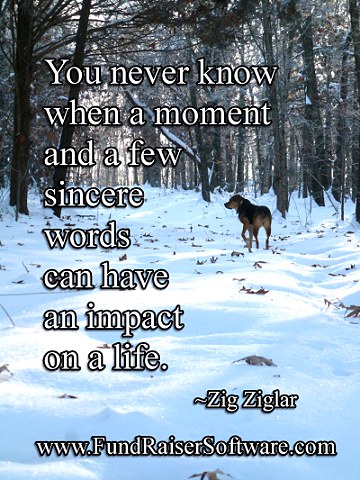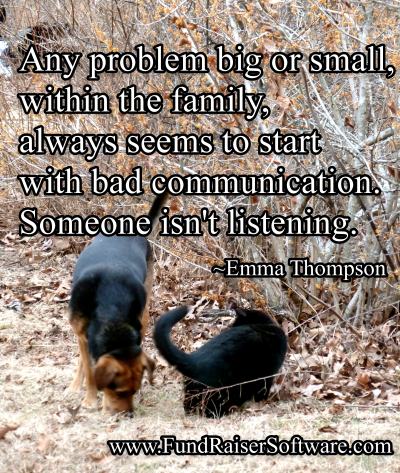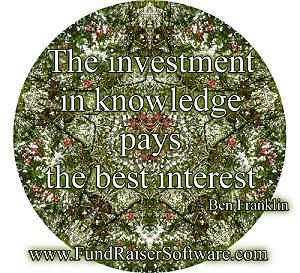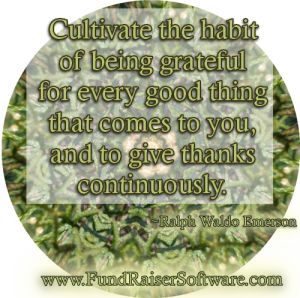
1. Define your parameters
When you create groupings, you need to have specifics in mind, to insure against overlap and exclusion. In other words, you want to make certain you don't miss anyone, but, at the same time, you want to make certain that no one record will be in multiple groupings for the same mailing. In Kim Klein's recent blog article, she talks about asking for specific amounts, or asking people to give within certain ranges of giving. So before you can ask for the right amount, you need to know who gave what amount in the past. And those are the parameters I'm talking about. Do you want just major donors? How do define that? Is it a certain size gift during a certain previous time period, or a total of giving during a previous time period, or something else altogether. You may end up needing several groupings, since you'll want to word your written appeal in different ways for different giving levels. So make sure you set your parameters carefully in advance to get the best and "cleanest" groupings possible.
2. Don't Overlap Ranges
As you define your parameters, make sure that your ranges, whether date ranges for previous giving, or dollar amount ranges for separating donor levels, do not overlap. If you have overlap, you may end up with name records that fit into more than one grouping, and, therefore, could receive multiple appeals instead of a single one. This can be a turn-off for a donor, and it's certainly confusing for them, if not for you, too. With date ranges, it's fairly straight forward. With dollar amounts, however, it's a good idea to have distinct amounts for your range extremes. In other words, if you are looking for people who gave more than $100, but not $500 or more, then that range would be $100.00 through $499.99, with the NEXT range starting at $500.00. Otherwise, you might have a donor who gave exactly $500.00 falling into both the 100-500 and 500-1000 groupings.




















